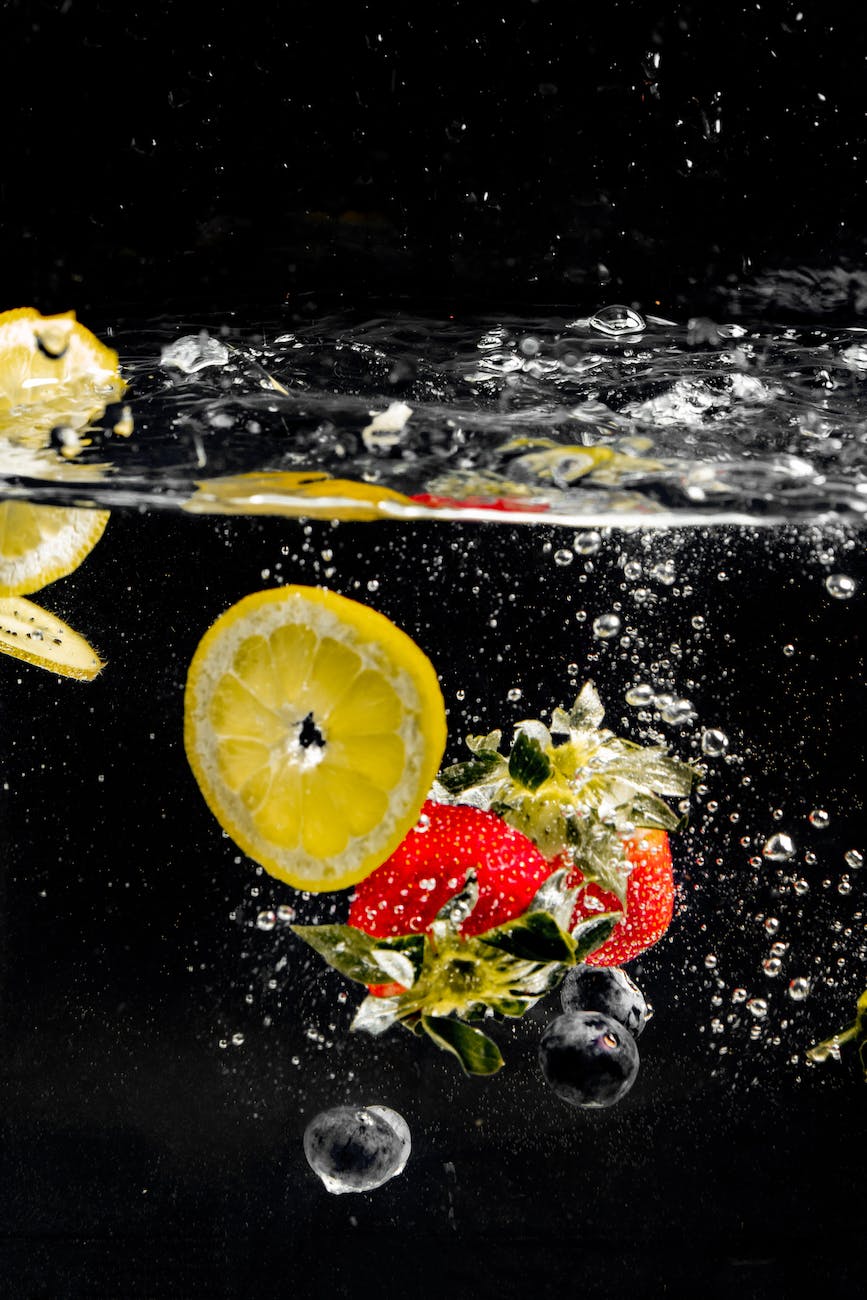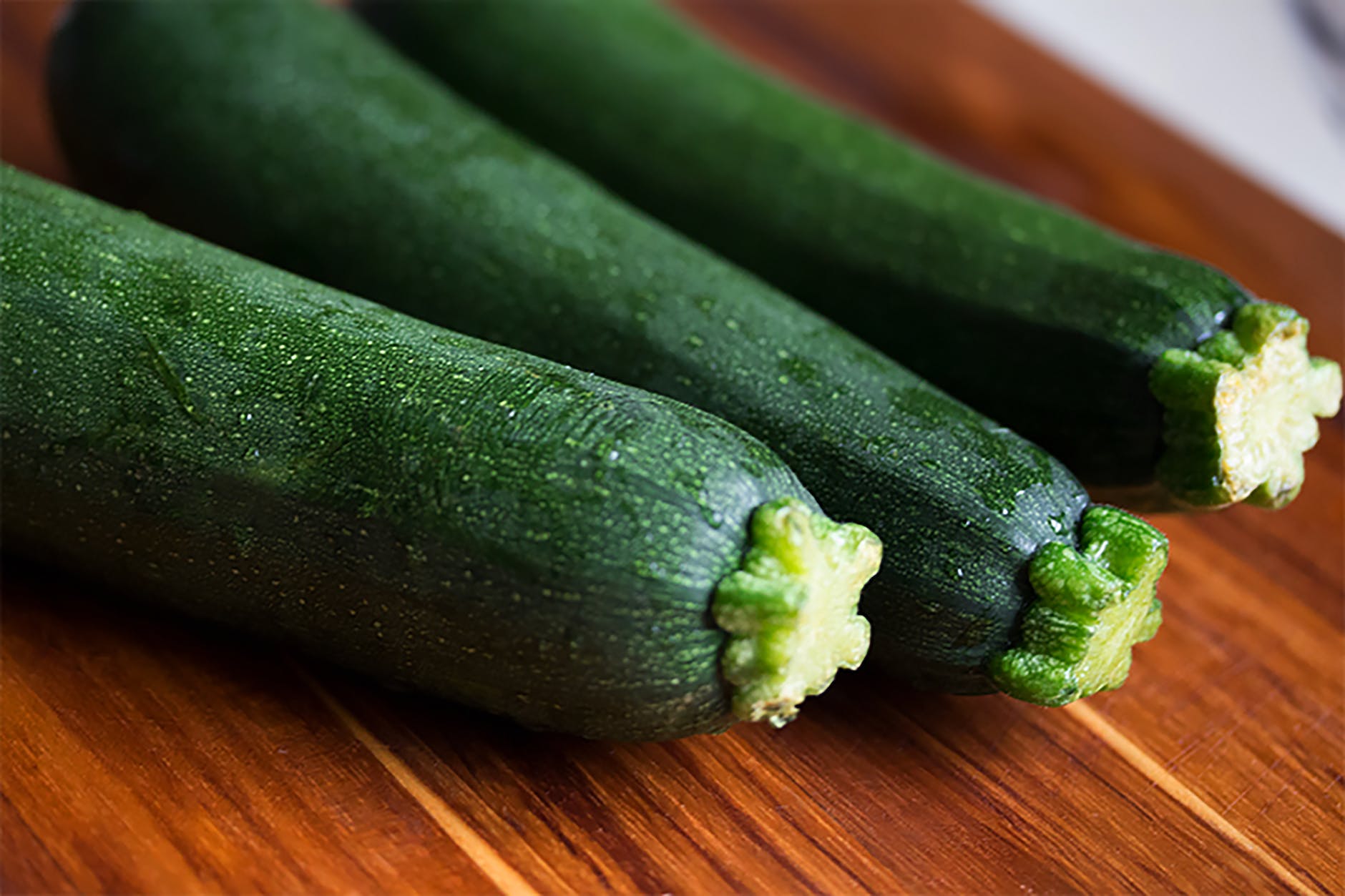
I. Introduction: The Diet-Arthritis Connection
Arthritis, a term often used to describe joint pain or joint disease, affects millions of people worldwide. While there are over 100 different types of arthritis, they all share one common trait: inflammation. This inflammation can lead to joint pain, swelling, and decreased range of motion, severely impacting an individual’s quality of life.
But did you know that what you eat can play a pivotal role in the severity of your arthritis symptoms?
Yes, diet and arthritis are intricately linked. While certain foods can help decrease inflammation, others can exacerbate it, leading to increased pain and flare-ups. This article aims to shed light on the foods that arthritis sufferers should be wary of, helping them make informed dietary choices for better joint health.
II. A Quick Dive into Arthritis
Before delving into the dietary aspects, it’s crucial to understand the basics of arthritis.
Types of Arthritis:
- Rheumatoid Arthritis (RA): An autoimmune disorder where the immune system mistakenly attacks the joints, leading to inflammation. RA primarily affects joints on both sides of the body, such as wrists, knees, and fingers.
- Osteoarthritis (OA): The most common form of arthritis, OA occurs when the protective cartilage that cushions the ends of bones wears down over time. It can affect any joint but commonly affects the knees, hips, hands, and spine.
- Psoriatic Arthritis: A type of arthritis that affects some people with psoriasis, a condition that features red patches of skin topped with silvery scales.
Common Symptoms:
While symptoms vary depending on the type of arthritis, some common ones include joint pain, stiffness, swelling, and decreased range of motion. These symptoms can range from mild to severe and can come and go over time.
Causes:
The causes of arthritis depend on its type. Factors like genetics, age, weight, injuries, and infections play a role. For instance, RA occurs due to an immune system malfunction, while OA results from wear and tear over the years.
III. How Diet Influences Arthritis
The saying “You are what you eat” holds especially true for arthritis sufferers. The foods you consume can either be a balm or a bane for your inflamed joints.
Inflammation and Diet:
Certain foods are known to promote inflammation in the body. For arthritis patients, consuming these foods can lead to increased pain and flare-ups. On the other hand, anti-inflammatory foods can help reduce these symptoms, offering relief.
Gut Health and Arthritis:
Emerging research suggests a strong connection between gut health and arthritis. An unhealthy gut can lead to increased inflammation throughout the body, exacerbating arthritis symptoms. A balanced diet plays a crucial role in maintaining gut health.
Weight Management:
Being overweight puts additional stress on joints, especially those in the knees, hips, and spine. By managing one’s diet and ensuring a balance of nutrients, arthritis sufferers can manage their weight, reducing the strain on their joints.
In the following sections, we’ll delve deep into the specific foods that can either help or harm those with arthritis. From the usual suspects to some surprising entries, our comprehensive list aims to guide you on your journey to better joint health.
IV. The 12 Culprits: Foods to Steer Clear Of
Navigating the world of nutrition can be a maze, especially when you’re trying to alleviate the symptoms of a condition like arthritis. While some foods act as allies, others can be your worst enemies. Here’s a list of the top 12 foods that arthritis sufferers should approach with caution:
1. Processed and Fried Foods
Modern diets are laden with processed foods, from chips and cookies to frozen meals. These foods often contain trans fats, which are known to increase inflammation. Fried foods, especially those fried in unhealthy oils, can exacerbate arthritis symptoms.
Tip: Opt for baked or grilled foods and increase your intake of fresh fruits and vegetables.
2. Sugars and Refined Carbs
High sugar consumption can lead to increased AGEs (advanced glycation end products) in the body, which spur inflammation. Refined carbohydrates, found in white bread, white rice, and many pastries, are notorious for boosting inflammation.
Tip: Choose whole grains and reduce added sugars in your diet. Read labels carefully.
3. Dairy Products
While dairy can be a good source of calcium and vitamin D, for some people, it can trigger arthritis pain due to the type of protein it contains. This protein can irritate the tissue around the joints in some individuals.
Tip: Consider alternatives like almond, soy, or oat milk. If you do consume dairy, ensure it’s organic and free from added hormones.
4. Alcohol and Tobacco
Tobacco and alcohol can lead to a host of health issues, including exacerbating the symptoms of arthritis. Smoking is particularly harmful as it can cause stress on connective tissues, leading to more arthritis pain.
Tip: Limit alcohol consumption and consider quitting smoking. Seek support if needed.
5. Salt and Preservatives
Many processed foods are high in salt and other preservatives to extend their shelf life. Excessive salt consumption can cause inflammation in the joints.
Tip: Opt for fresh foods and try to cook at home as much as possible. When buying packaged foods, choose low-sodium versions.
6. Corn Oil
Many snacks and baked goods contain corn or other oils high in omega-6 fatty acids, which can trigger the body to produce pro-inflammatory chemicals.
Tip: Use olive oil or avocado oil for cooking, which are packed with anti-inflammatory omega-3 fatty acids.
In the subsequent sections, we’ll continue to explore the remaining foods on our list, offering insights and alternatives to help you make informed dietary choices. Remember, while diet plays a significant role in managing arthritis, it’s essential to consult with a healthcare professional to tailor a plan that’s right for you.
V. Continuing the List: More Foods to Approach with Caution
Arthritis sufferers often find that certain foods can trigger or worsen their symptoms. While individual reactions can vary, the following foods have been identified as potential culprits for many:
7. Red Meat and Processed Meats
Red meats, especially those that are processed, are high in saturated fats, which can increase inflammation. Processed meats like bacon, sausages, and deli meats often contain added chemicals and preservatives that can exacerbate arthritis symptoms.
Tip: Consider lean proteins like poultry, fish, or plant-based alternatives. If you do consume red meat, opt for grass-fed, organic varieties.
8. Gluten and Casein
Found in wheat and rye, gluten can be problematic for some people, especially those with an intolerance or celiac disease. Similarly, casein, a protein found in dairy, can irritate the joints for some arthritis sufferers.
Tip: If you suspect gluten or casein might be triggering your symptoms, consider an elimination diet under the guidance of a nutritionist. There are plenty of gluten-free and dairy-free alternatives available today.
9. Nightshade Vegetables
This category includes tomatoes, eggplants, peppers, and potatoes. Some arthritis patients believe that these vegetables exacerbate their symptoms, although scientific evidence is limited.
Tip: If you suspect nightshades might be a trigger, try eliminating them from your diet for a few weeks to observe any changes. Reintroduce them one at a time to identify any specific culprits.
10. Eggs
Eggs, especially the yolks, contain arachidonic acid, which can lead to the production of pro-inflammatory prostaglandins. Eggs also contain saturated fats, which can induce inflammation for some individuals.
Tip: If you consume eggs, consider using just the egg whites or opt for omega-3 enriched eggs, which can have anti-inflammatory properties.
11. Certain Oils and Fats
Apart from corn oil, certain other oils like sunflower, safflower, soy, and vegetable oils are high in omega-6 fatty acids. While omega-6 is essential for the body, an imbalance between omega-6 and omega-3 can lead to increased inflammation.
Tip: Balance your omega-6 intake with omega-3 rich foods like flaxseeds, walnuts, and fatty fish.
12. Artificial Sweeteners
While they might seem like a healthier alternative to sugar, certain artificial sweeteners can trigger inflammation in the body, worsening arthritis symptoms.
Tip: Opt for natural sweeteners like honey or maple syrup in moderation. Always read labels to avoid hidden artificial sweeteners in packaged foods.
In the next sections, we’ll delve into foods that can benefit arthritis sufferers, offering a reprieve from symptoms and promoting overall joint health. Remember, everyone’s body is different. It’s essential to listen to your body and adjust your diet accordingly, always in consultation with a healthcare professional.
VI. Foods That Fight Arthritis: Your Dietary Allies
While there are foods that can exacerbate arthritis symptoms, there are also many that can help combat inflammation and provide relief. Incorporating these foods into your diet can not only alleviate arthritis-related discomfort but also promote overall health and well-being.
1. Fatty Fish
Rich in omega-3 fatty acids, fish like salmon, mackerel, sardines, and trout can significantly reduce inflammation and decrease arthritis symptoms.
Tip: Aim for at least two servings of fatty fish per week. If you’re not a fan of fish, consider omega-3 supplements after consulting with your doctor.
2. Turmeric and Ginger
These spices are not just for flavor. Curcumin, the active component in turmeric, has potent anti-inflammatory properties. Similarly, ginger can reduce symptoms of osteoarthritis and rheumatoid arthritis.
Tip: Incorporate these spices into your meals or consider supplements. A warm turmeric or ginger tea can also be soothing.
3. Berries
Strawberries, blueberries, raspberries, and blackberries are packed with antioxidants called anthocyanins, which have anti-inflammatory effects.
Tip: Add berries to your morning cereal, yogurt, or enjoy them as a snack. They’re also great in smoothies.
4. Broccoli
This green vegetable is rich in sulforaphane, which has been found to slow the progression of osteoarthritis.
Tip: Steam, stir-fry, or roast broccoli. Adding a touch of olive oil and garlic can enhance its flavor.
5. Green Tea
Green tea contains polyphenols, which are antioxidants believed to reduce inflammation and slow cartilage destruction.
Tip: Swap one of your daily coffee or black tea servings with green tea. If you’re sensitive to caffeine, opt for decaffeinated versions.
6. Nuts and Seeds
Walnuts, pine nuts, pistachios, and almonds are rich in inflammation-fighting monounsaturated fats.
Tip: A handful of nuts can be a great snack. Seeds like chia, flax, and pumpkin seeds can be sprinkled on salads, yogurts, or incorporated into baked goods.
In the upcoming sections, we’ll provide practical tips on creating an arthritis-friendly meal plan, discuss the importance of hydration, and explore lifestyle changes that can complement your dietary efforts in managing arthritis. Remember, a holistic approach, combining diet, exercise, and medical advice, is the key to effectively managing arthritis.
VII. Crafting an Arthritis-Friendly Meal Plan
Creating a meal plan tailored to managing arthritis doesn’t have to be daunting. With a few simple guidelines and a bit of planning, you can make meals that not only taste delicious but also help alleviate your symptoms.
1. Start with a Balanced Breakfast
A nutritious start to the day can set the tone for your dietary choices. Consider oatmeal topped with berries and nuts, or a smoothie with spinach, ginger, and flaxseeds.
Tip: Avoid sugary cereals and pastries. Opt for whole grains and protein-rich foods to keep you full and energized.
2. Plan Ahead
Meal prepping can be a game-changer. Dedicate a day to prepare meals for the week. This ensures you always have arthritis-friendly options on hand, reducing the temptation to reach for processed foods.
Tip: Batch cook anti-inflammatory soups or stews and freeze them in portions.
3. Stay Hydrated
Water plays a crucial role in joint health. Ensure you’re drinking enough throughout the day. Herbal teas and infused waters can also be refreshing options.
Tip: Limit sugary drinks and excessive caffeine, which can dehydrate the body.
4. Snack Smart
Choose snacks that combat inflammation. Carrot sticks with hummus, a handful of walnuts, or a piece of fruit can be great choices.
Tip: Avoid snacks high in salt, sugar, or unhealthy fats.
5. Diversify Your Diet
Ensure you’re getting a variety of foods to benefit from different nutrients. Rotate your protein sources, try new vegetables, and experiment with whole grains like quinoa or barley.
Tip: Explore international cuisines, many of which offer flavorful and healthy dishes suitable for arthritis sufferers.
6. Listen to Your Body
Everyone’s body is unique. What works for one person might not work for another. Pay attention to how certain foods make you feel and adjust your diet accordingly.
Tip: Consider keeping a food diary to track any patterns between what you eat and changes in your arthritis symptoms.
In the next section, we’ll delve into the importance of combining your diet with physical activity, stress management, and other holistic approaches to managing arthritis. Remember, while diet is a powerful tool, a comprehensive approach will yield the best results in your journey to better health.
VIII. Beyond Diet: A Holistic Approach to Managing Arthritis
While diet plays a pivotal role in managing arthritis, it’s essential to remember that a comprehensive approach, encompassing various aspects of well-being, will yield the most significant benefits.
1. Physical Activity
Regular exercise can help strengthen the muscles around your joints, improve flexibility, and combat fatigue.
Tip: Opt for low-impact exercises like swimming, walking, or yoga. Always consult with a physiotherapist or healthcare professional before starting a new exercise regimen.
2. Stress Management
Chronic stress can exacerbate arthritis symptoms. Finding ways to manage stress can significantly improve your quality of life.
Tip: Consider mindfulness practices like meditation, deep breathing exercises, or journaling. Even a few minutes a day can make a difference.
3. Weight Management
Carrying extra weight can put additional strain on your joints, especially the knees, hips, and spine. Maintaining a healthy weight can help alleviate symptoms.
Tip: Focus on a balanced diet and regular exercise. If needed, seek guidance from a nutritionist or dietitian.
4. Regular Medical Check-ups
Stay in regular contact with your rheumatologist or primary care physician. Regular check-ups can help monitor your condition and adjust treatments as necessary.
Tip: Always inform your doctor about any dietary or lifestyle changes you’re considering.
5. Join a Support Group
Connecting with others who understand what you’re going through can provide emotional support and practical tips.
Tip: Look for local or online arthritis support groups. Sharing experiences and solutions can be immensely beneficial.
6. Stay Informed
Arthritis research is ongoing, and new treatments and findings emerge regularly. Staying informed can help you make educated decisions about your health.
Tip: Subscribe to reputable health newsletters or join arthritis organizations to receive updates.
IX. Conclusion: Your Journey to Better Joint Health
Arthritis can be challenging, but with the right tools and knowledge, you can lead a fulfilling, active life. Diet, while crucial, is just one piece of the puzzle. By adopting a holistic approach, listening to your body, and seeking support when needed, you can navigate the challenges of arthritis with confidence and optimism.
Remember, every individual is unique. What works for one person might not work for another. It’s essential to find what’s best for you, always in consultation with healthcare professionals. Your journey to better joint health is a continuous process of learning, adapting, and thriving. Stay positive, stay informed, and take proactive steps towards a healthier, happier you.
FAQs: 12 Foods to Avoid with Arthritis
1. Why is diet important for arthritis management?
Diet plays a significant role in arthritis management because certain foods can exacerbate inflammation, a primary cause of arthritis pain. By identifying and avoiding these foods, individuals can potentially reduce flare-ups and improve their overall well-being.
2. Are nightshade vegetables bad for arthritis?
Nightshade vegetables, including tomatoes, eggplants, peppers, and potatoes, contain solanine, which some believe might aggravate arthritis pain. However, scientific evidence is inconclusive. It’s essential to monitor how your body reacts to these foods and make dietary choices accordingly.
3. How does sugar impact arthritis symptoms?
Excessive sugar intake can lead to increased inflammation in the body, potentially worsening arthritis symptoms. It’s advisable to limit sugary foods and beverages and focus on a balanced diet rich in whole foods.
4. Can omega-3 fatty acids benefit arthritis sufferers?
Yes, omega-3 fatty acids, found in fatty fish, flaxseeds, and walnuts, have anti-inflammatory properties. Incorporating these foods into your diet can help reduce inflammation and alleviate arthritis symptoms.
5. Are there any foods that can help reduce arthritis pain?
Foods rich in antioxidants, omega-3 fatty acids, and certain spices like turmeric and ginger have anti-inflammatory properties that can help combat arthritis pain. A balanced diet emphasizing these foods can be beneficial.
6. How does weight management impact arthritis?
Carrying extra weight puts additional strain on joints, especially the knees, hips, and spine. Maintaining a healthy weight can help alleviate arthritis symptoms and improve joint health.
7. Are there any drinks I should avoid with arthritis?
It’s advisable to limit sugary drinks, excessive caffeine, and alcohol, as they can contribute to inflammation and dehydration, potentially exacerbating arthritis symptoms.
8. How can I identify which foods trigger my arthritis symptoms?
Keeping a food diary can help track any patterns between what you eat and changes in your arthritis symptoms. Over time, this can help identify potential triggers.
9. Is gluten bad for arthritis?
Some individuals with arthritis have reported symptom relief after eliminating gluten from their diet. However, it’s essential to consult with a healthcare professional before making significant dietary changes.
10. Can a vegetarian or vegan diet help with arthritis symptoms?
Some research suggests that a plant-based diet can reduce inflammation and benefit individuals with arthritis. However, it’s crucial to ensure that the diet is balanced and provides all necessary nutrients.
Blog Tags: arthritis diet, inflammation, joint pain, arthritis management, anti-inflammatory foods, arthritis triggers, omega-3 fatty acids, nightshade vegetables, weight management, arthritis research, holistic arthritis care, arthritis support.













